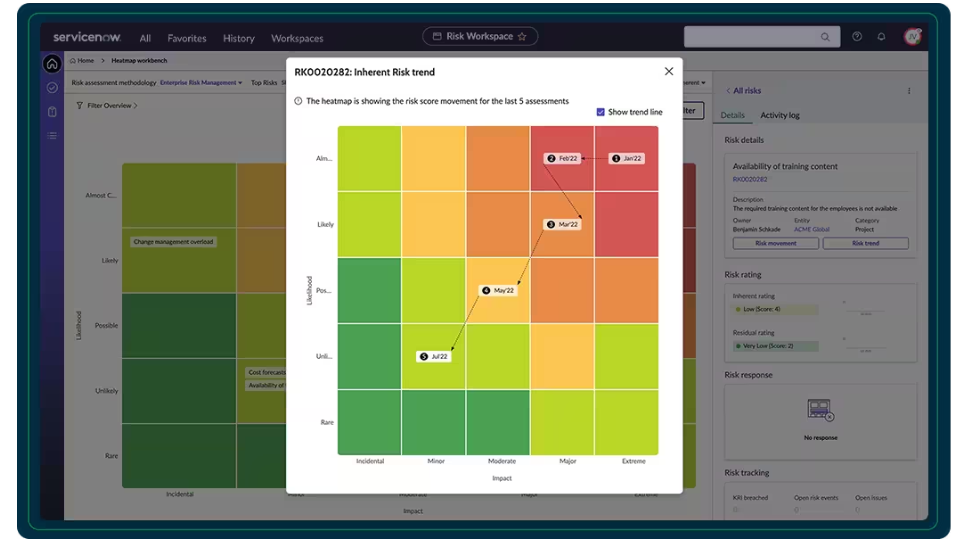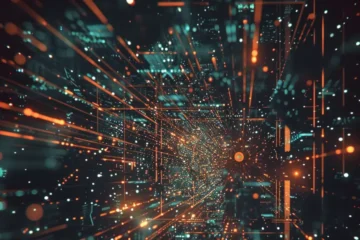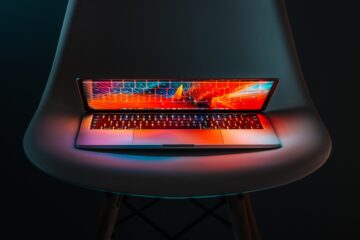High-performing software projects aren’t just lucky. A Project Management Institute (PMI) study found that high-performing projects are 2.5 times more likely to manage risks proactively than low-performing projects. In this Artelogic blog post, we will explore the importance of risk management in software engineering, the key components and techniques, and some best practices and tools for effective risk management.
In Software Engineering, risks are everywhere – lurking bugs, changing requirements, and unforeseen challenges. Risk management isn’t about predicting the future; it’s about being prepared for anything. It’s like shining a light into the dark corners of your project, uncovering potential pitfalls before they become insurmountable obstacles. By identifying, assessing, and mitigating risks, you can confidently navigate the ever-changing landscape of software development.
What is Risk Management in Software Engineering in Short?
Risk management in software engineering aims to:
- Identify the potential risks that could affect the software project, such as technical, project, or business risks.
- Assess the likelihood and impact of each risk on the project’s objectives, schedule, budget, quality, or safety.
- Prioritize the risks based on their severity and urgency.
- Develop and implement strategies and actions to mitigate or eliminate the risks or reduce their adverse effects.
- Monitor and control the risks throughout the project lifecycle and update the risk management plan as needed.
Risk management in software engineering is not a one-time activity but a continuous and iterative process that requires the involvement and collaboration of all project stakeholders, such as software engineers, project managers, customers, users, and sponsors.
Why is Risk Management Important in Software Engineering ?
Statistics paint a grim picture: Project Management Institute (PMI) studies show that up to 60% of software projects fail to meet their initial objectives, with risk management deficiencies being a major contributing factor. “These failures can lead to significant financial losses, reputational damage, and lost opportunities,” – adds Oleksandr Trofimov, Chief Technology Officer at Artelogic. Implementing a robust risk management framework can drastically reduce these risks, allowing teams to:
- Identify and prioritize potential threats before they escalate into major problems.
- Develop proactive mitigation strategies that minimize the impact of these threats.
- Allocate resources efficiently and make informed decisions based on real-time risk data.
- Improve communication and collaboration across project stakeholders.
- Boost team morale and productivity by creating a sense of control and preparedness
How to Do Risk Management in Software Engineering?
As Ihor Prudyvus, Engineering Director at Artelogic, aptly stated, “Risk management is an ongoing process, not a one-time event.” While numerous methods and techniques are available, they all contribute to a continuous process aimed at identifying, analyzing, mitigating, and controlling potential pitfalls throughout the entire software development lifecycle.
This iterative journey typically unfolds across four key stages:
Risk Identification
Risk identification is the process of finding and documenting the potential risks that could affect the software project. It involves:
- Reviewing the project scope, objectives, requirements, specifications, design, and implementation.
- Consulting the project stakeholders, such as software engineers, project managers, customers, users, and sponsors, to elicit their expectations, concerns, and assumptions.
- Analyzing the project environment, such as the technical, organizational, or business context, to identify the external factors that could influence the project.
- Using various techniques, such as brainstorming, checklists, interviews, surveys, or historical data, to generate a list of possible risks.
The output of risk identification is a risk register, which is a document that records the identified risks and their characteristics, such as name, description, category, source, and owner.
Tips from experts:
Carefully analyze whether it is worth treating as risks for any adverse events that happen in every project, like minor miscommunications, staff burning, emotional issues, or temporary issues in finding the best engineering solutions.
First of all, develop the scale of importance of possible events, keeping in mind that not each one could be regarded as a risk for the project; otherwise, the fear of the risks can bind the team’s creativity and flexibility. The real risks are the detrimental events or circumstances that can’t be handled easily or can’t be handled at all; everything else is simply a temporary issue requiring the application of PM managerial skills.
Risk Analysis
Risk analysis is the process of evaluating the likelihood and impact of each identified risk on the project’s objectives, schedule, budget, quality, or safety. It involves:
- Estimating the probability of occurrence and the severity of consequences of each risk, using quantitative or qualitative methods, such as expert judgment, historical data, statistical analysis, or simulation.
- Calculating the risk exposure, which is the product of probability and impact, to measure the potential loss or damage caused by each risk.
- Prioritizing the risks based on their risk exposure, to determine the order of attention and action.
The output of risk analysis is a risk matrix, which is a table that shows the risk exposure and priority of each risk, using a color-coded scale, such as low, medium, or high.
Tips from experts:
Involve the entire team to evaluate the risks and prioritize them. It is better to schedule a special meeting and collect the various opinions. Consider that the approaches and visions of technical and non-technical team members can differ, and PM has an opportunity to understand each of their ways of thinking. It could be helpful in the future when a team struggles with obstacles and risks.
Risk Mitigation
Risk mitigation is the process of developing and implementing strategies and actions to reduce or eliminate the risks or their negative effects on the software project. It involves:
- Choosing the most appropriate risk response strategy for each risk, based on the risk exposure and priority. The common risk response strategies are:
- Avoidance: eliminating the risk by changing the project plan, scope, requirements, design, or implementation.
- Reduction: decreasing the probability or impact of the risk by applying preventive or corrective measures, such as testing, verification, validation, or quality assurance.
- Transfer: shifting the responsibility or impact of the risk to a third party, such as a contractor, a vendor, or an insurer.
- Acceptance: acknowledging the risk and its consequences and preparing a contingency plan or a reserve fund to deal with it if it occurs.
- Defining the specific risk mitigation actions for each risk, such as tasks, activities, resources, or deliverables, and assigning them to the responsible persons or teams.
- Integrating the risk mitigation actions into the project plan, schedule, budget, and quality plan, and communicating them to the project stakeholders.
The output of risk mitigation is a risk management plan, a document describing the risk response strategies and actions and their roles, responsibilities, and timelines.
Example of Risk Mitigation Plan:
| Risk | Type of risk | Triggering event | Mitigation Actions | Owner |
| Undefined Product features | External | Requirements aren’t explicitly defined / no stakeholder confirmation before the sprint starts. | Drafted estimation for prolonged pre-development / requirement elicitation scope, relevant communication with stakeholders | PM |
| Uncertainty about tech stack | Internal | Too many objections regarding the initial tech stack / Unproductive discussion within the engineering team | Define the tech supervisors and involve them in selecting the architecture blueprint and tech stack. | Team Lead |
Risk Monitoring and Control
Risk monitoring and control is the process of tracking and reviewing the risks and their management throughout the software project lifecycle. It involves:
- Measuring and reporting the status and performance of the risks and their mitigation actions using various indicators, such as risk exposure, risk occurrence, risk resolution, or risk impact.
- Evaluating and updating the risk register, risk matrix, and risk management plan based on the actual project progress, changes, or feedback.
- Identifying and managing new or emerging risks or changes in existing risks using the same risk management process.
- Learning and improving the risk management process by capturing and documenting the lessons learned, best practices, and recommendations for future projects.
The output of risk monitoring and control is a risk report, which is a document that summarizes the risk management results, outcomes, and issues and provides suggestions for improvement.
Best Practices for Risk Management in Software Engineering
“Risk management in software engineering is not a trivial or easy task, but it can be facilitated and improved by following some best practices and using some tools that I recommend,” – said Ihor Prudyvus, Engineering Director at Artelogic:
- Involve and engage all project stakeholders in risk management to ensure their participation, contribution, and commitment.
- Start risk management as early as possible in the software development lifecycle until the project’s end to prevent or minimize surprises and crises.
- Use appropriate and reliable techniques and tools for risk identification, analysis, mitigation, and monitoring, such as brainstorming, checklists, interviews, surveys, historical data, expert judgment, statistical analysis, simulation, testing, verification, validation, and quality assurance.
- Document and communicate the risks and their management clearly and consistently, using various formats, such as risk register, risk matrix, risk management plan, or risk report, and share them with the project stakeholders regularly and timely.
- Review and update the risks and their management frequently and periodically to reflect the current project situation, changes, or feedback and to identify and address new or emerging risks.
- Learn and improve from the risk management experience by capturing and documenting the lessons learned, best practices, and recommendations for future projects.
Additional three tips:
- Promote a Culture of Risk Awareness: Encourage open communication about potential risks and empower team members to participate in risk management activities.
- Regularly Review and Update Risks: As your project progresses, new risks may emerge, and existing risks may change in severity. Regularly review your risk register and update it accordingly.
- Learn from Past Experience: Analyze past projects and identify recurring risks. This knowledge can be used to mitigate similar risks in future projects proactively.
Top 5 Tools for Risk Management in 2024
Risk management software, such as Microsoft Project, Jira, and RiskyProject, can help organizations identify, assess, and mitigate risks more effectively.
But is there other IT risk management software for managing risks? We have some ideas. Here are the top 5 tools for risk management in software engineering:
1. nTask
A user-friendly risk management tool with features like risk assessment, time tracking, and Kanban boards.

Pros:
- Affordable pricing
- Intuitive interface
- Risk identification and assessment
- Collaborative features
Cons:
- Limited customization options
- Fewer reporting features compared to other tools
2. LogicGate
LogicGate offers risk management with adaptability and automation, catering to complex projects.

Pros:
- Highly customizable
- Advanced automation features
- Suitable for large and complex projects
Cons:
- Steeper learning curve
- Higher pricing compared to other tools
3. A1 Tracker
A1 Tracker specializes in real-time risk reporting and tracking, providing valuable insights.

Pros:
- Real-time risk reporting and monitoring
- Customizable dashboards and reports
- Integrates with various project management tools
Cons:
- Limited risk assessment features
- May not be suitable for small projects
4. CURA
CURA focuses on operational project risk management, ideal for streamlining workflows.

Pros:
- Streamlines risk management workflows
- Integrates with other project management tools
- Offers risk mitigation and contingency planning tools
Cons:
- Limited scope compared to other tools
- May not be suitable for all software development projects
5. ServiceNow
ServiceNow excels at handling high-impact risks with its comprehensive features and scalability.

Pros:
- Robust risk management for software features
- Scalable for large projects and organizations
- Comprehensive risk mitigation and response planning
Cons:
- Complex and expensive, unlike other risk management systems
- May not be suitable for small or simple projects
Additional factors to consider about software for risk management
- Team size and expertise: Some risk management softwares are more user-friendly than others, and the size and expertise of your team will influence your choice.
- Project complexity: Complex projects may require more advanced features and customization options.
- Budget: Tool prices vary significantly, so consider your budget and available resources.
Management risk software empowers software engineering teams to navigate the complexities of modern software development with greater confidence and control. Remember, the best risk management and compliance software tool for your team will depend on your specific needs and preferences. I recommend trying out free trials or demos of different tools to see which one works best for you.
Conclusion
Risk management isn’t just about avoiding disaster; it’s about unlocking a new level of software development efficiency and success. It’s about empowering teams to work smarter, not harder, and ultimately, to deliver projects that truly delight their users.
By following a systematic and structured approach and using appropriate and reliable techniques and tools, including risk manager software, software engineers can identify, assess, mitigate, and monitor the risks throughout the software development lifecycle, optimize the use of resources, improve communication and collaboration, and enhance customer satisfaction.
Don’t wait. Take the first step towards risk-free software development now!

New Trends in Energy Trading and Risk Management Software

7 Common Mistakes in Software Requirements Specifications










